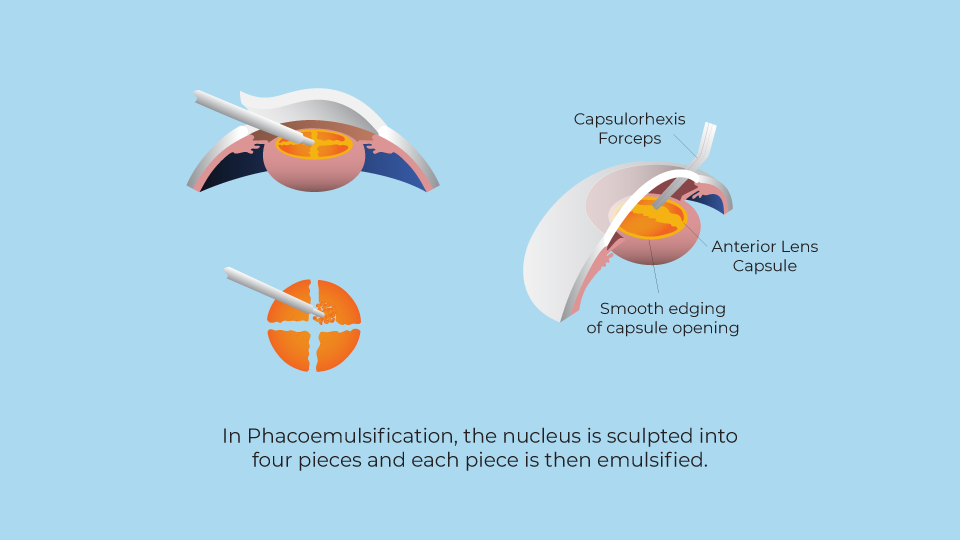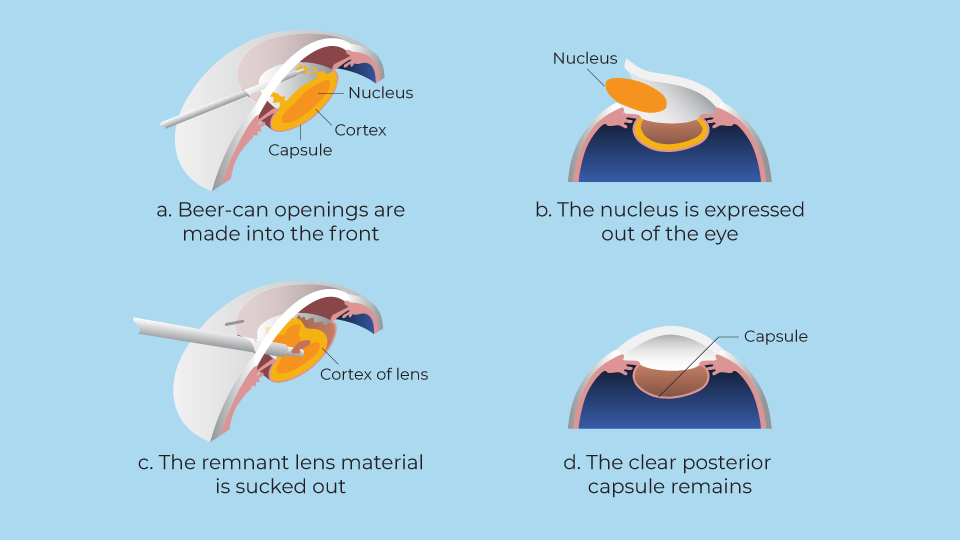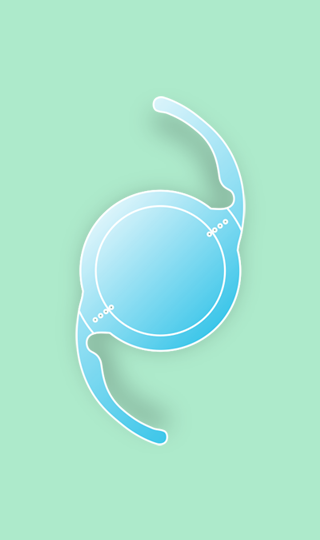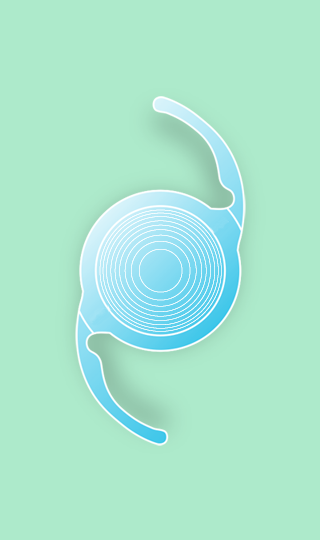‹ Cataract Surgery
How is Cataract Surgery Done?
There are 2 available surgeries:
-
Phacoemulsification (no-stitch small incision cataract surgery)
- Incision size: 2.5mm
- A soft, foldable lens implant
- Single stitch or no stitch required
Cataract extraction with phacoemulsification and implantation of a foldable lens is considered the "gold standard" technique and is widely used. It is good for almost all cataracts.
How is it performed?
- The cataract is removed using ultrasonic power through a microscopic opening.
- An artificial intraocular lens implant (IOL) is then placed into the eye.

Suturing is usually not required and restoration of vision is much faster than conventional cataract surgery.
-
Extracapsular cataract surgery (conventional cataract surgery)
- Incision size: 10 to 12mm
- Hard, plastic implant
- Multiple stitches required (~7 to 8 stitches)
How is it performed?

This technique is good for very dense cataracts which are too hard to be removed by phacoemulsification. This is a well-established operation that has been practised by almost all eye surgeons around the world.
What are the types of intraocular lens implant (IOL)?
An intraocular lens implant (IOL) is placed within the capsule of the removed cataractous lens. The IOL can be made of a stiff material like silicone or acrylic.
 |
 |
 |
Monofocal Aspheric
IOL |
Monofocal Aspheric Toric
IOL |
Multifocal
IOL |
There are 3 main types of IOLs:
- Monofocal aspheric lenses
- Give the best quality day and night vision
- Patients still have to wear reading glasses
- Do not correct pre-existing astigmatism
- Monofocal aspheric toric lenses
- Reduce or eliminate astigmatism
- Give good quality night vision
- Good for patients with high pre-existing astigmatism above 75 degrees
- Patients still have to wear reading glasses
- Multifocal lenses
- Most aggressively marketed by IOL manufacturers
- Good for people who do not want to wear reading or distance glasses
- Reduces quality of dim/ night vision and increases the risk of haloes and glare at night.
- Can be combined with astigmatism correction
Recently, segmented and trifocal lenses have been developed. This has slightly reduced the problems of glare and haloes. However, the problem of low contrast dim vision is still present.
Diagnosing and Treating Cataract ›











Safety, Quality, Care and Concern